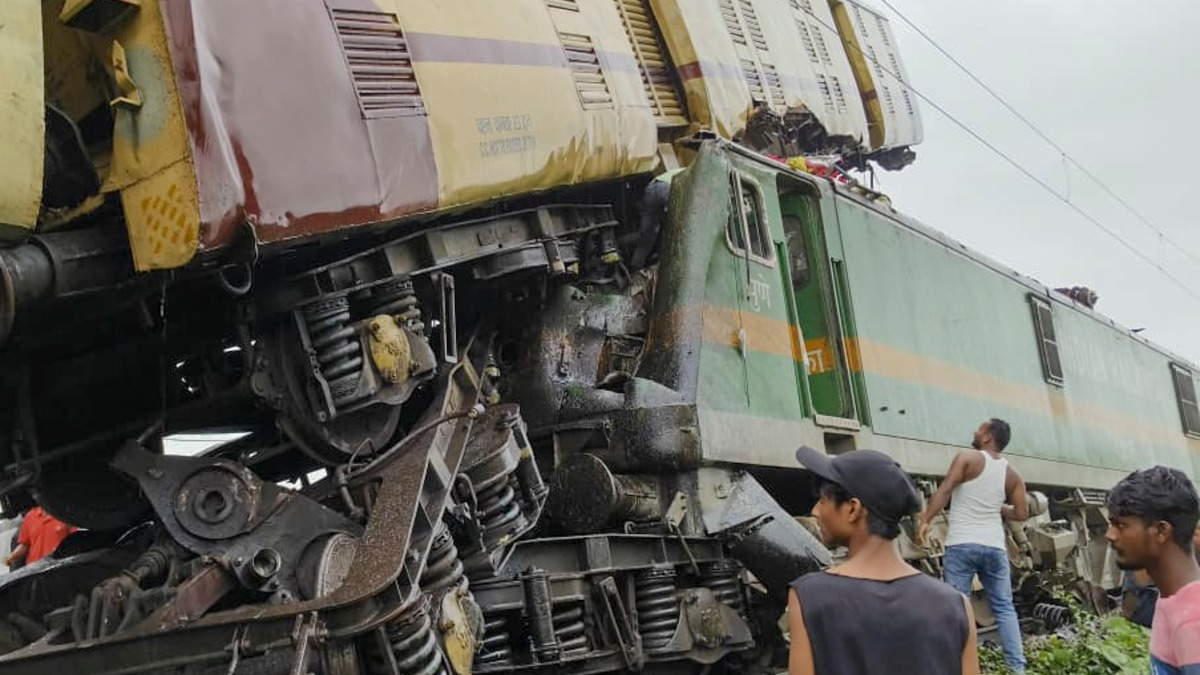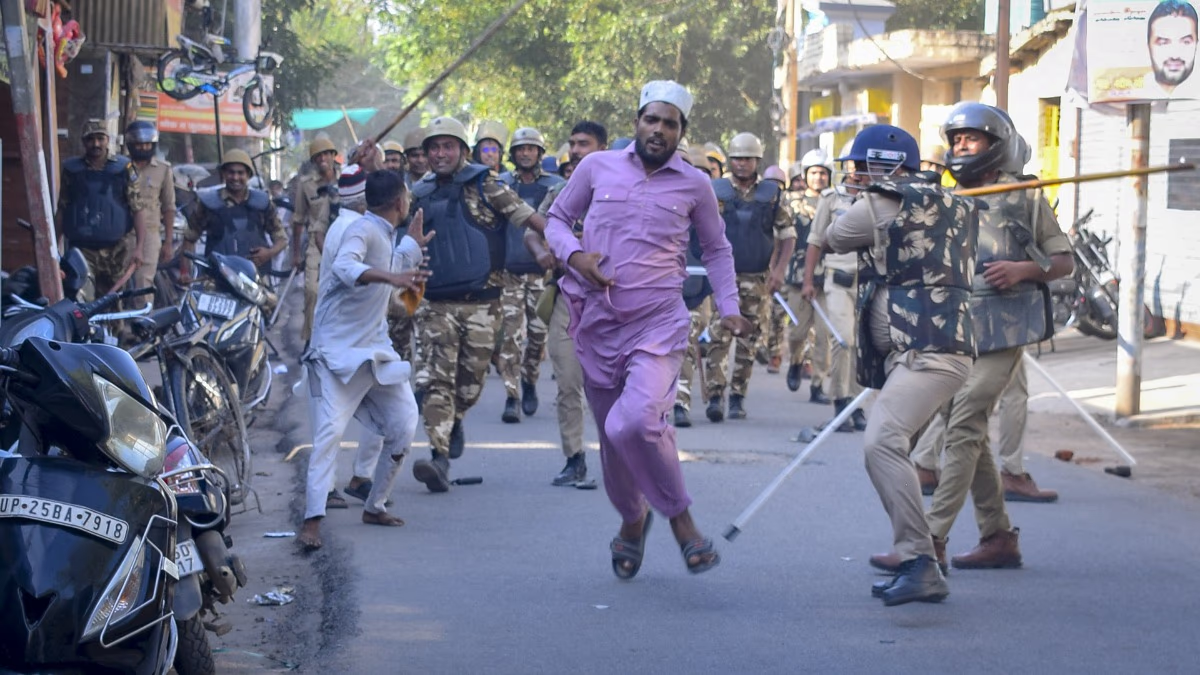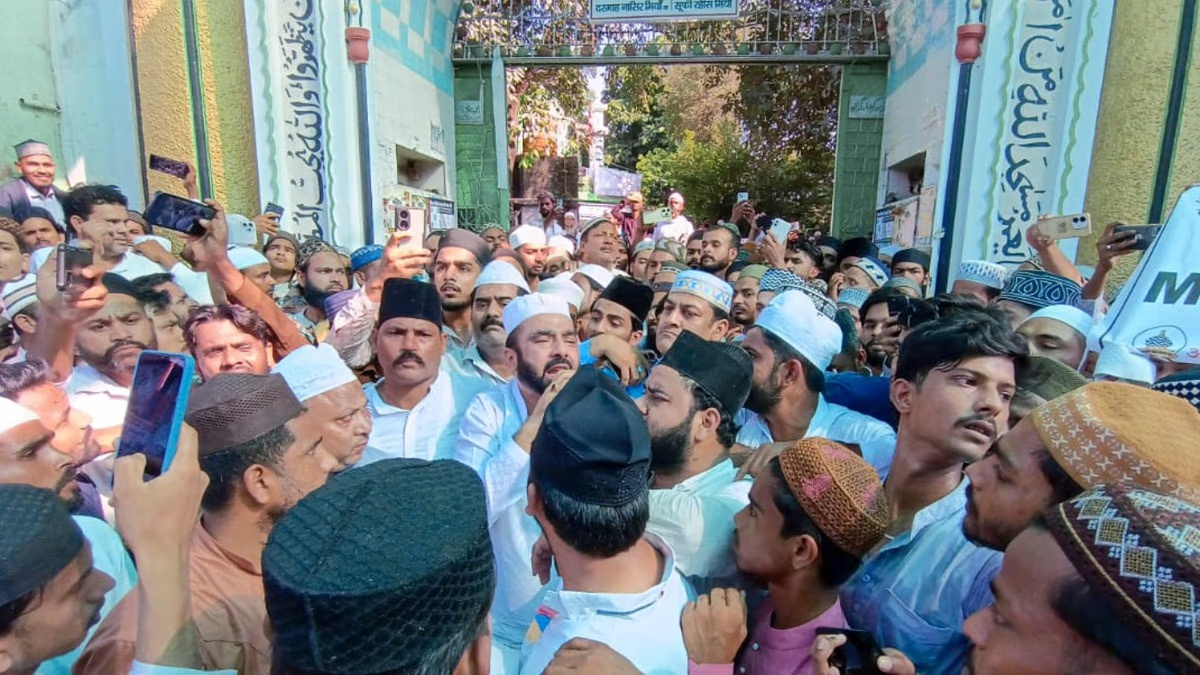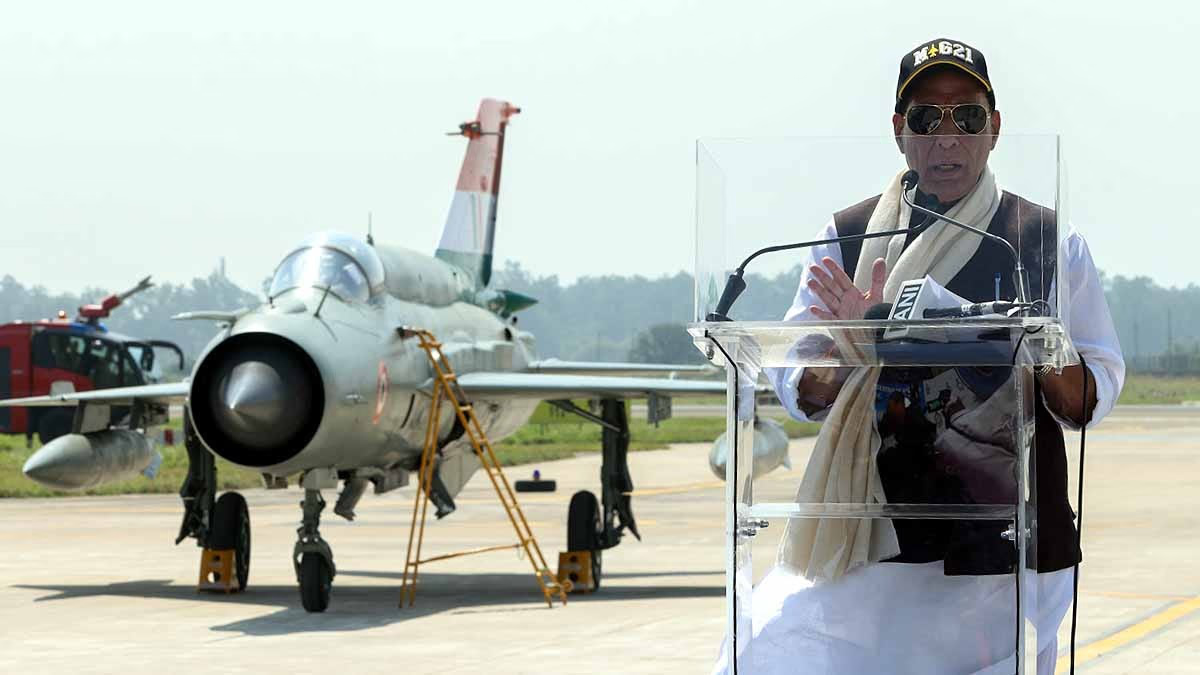A devastating rail accident in New Jalpaiguri, West Bengal, on Monday has claimed the lives of 9 individuals, leaving 47 injured.
The collision occurred when a goods train rear-ended the Kanchanjunga Express, which was travelling from Agartola to Sealdah. The incident also resulted in the fatalities of the freight train's driver and the passenger train's guard.
According to reports, the automatic signaling system between Ranipatra Railway Station and Chattar Hat Junction was malfunctioning since 5:50 AM on the day of the accident. It is at this very location where the freight train collided with the Kanchanjunga Express.
The tragedy has revived memories of a rail accident last June in Balasore, where three trains collided, leading to about 300 deaths. Through infographics, let's delve into how this incident in New Jalpaigurai unfolded.
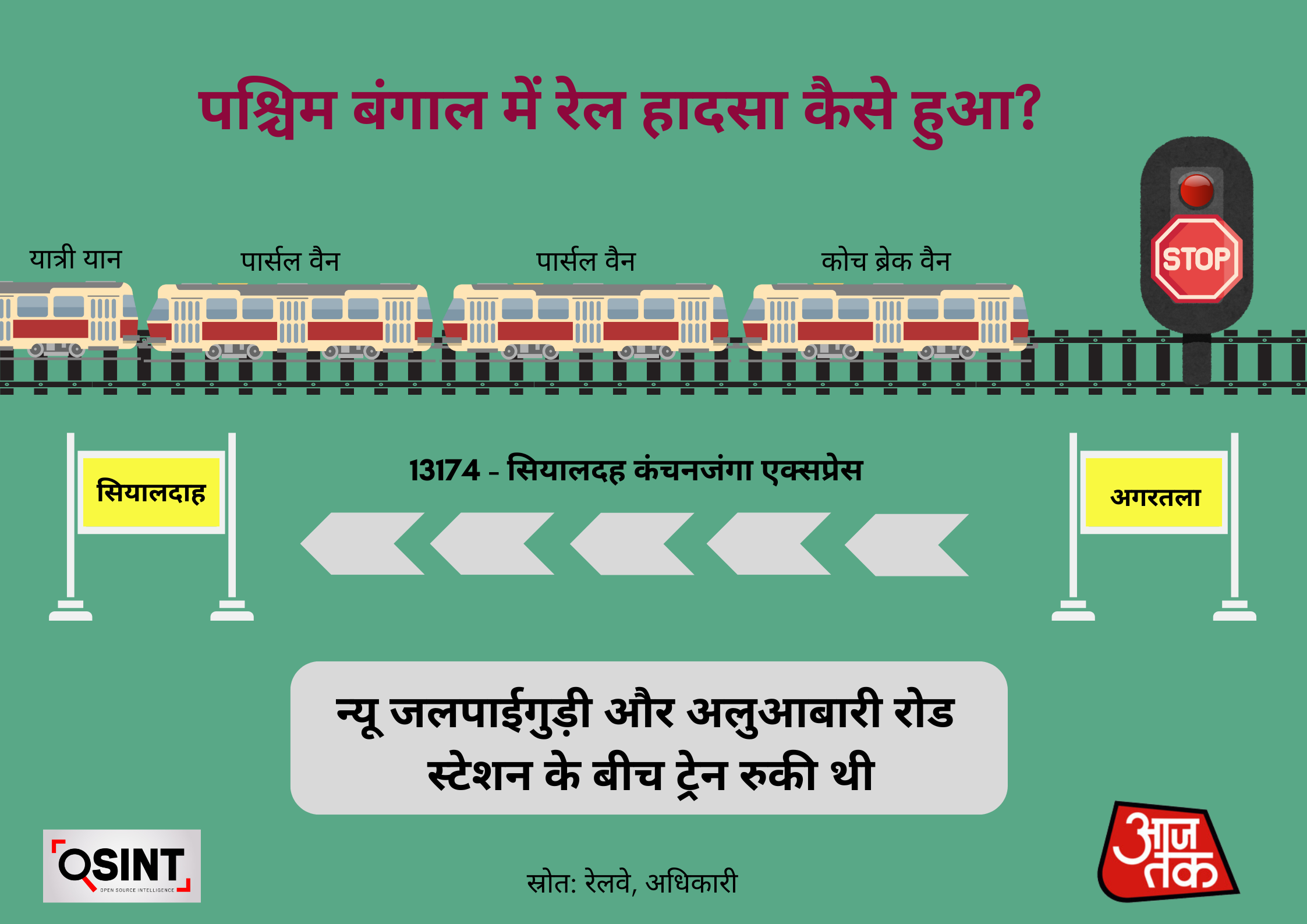
Source: aajtak
Railway officials stated that the Sealdah Kanchanjunga Express (13174) had departed from the Sabroom railway station in Tripura for Kolkata on Sunday evening.
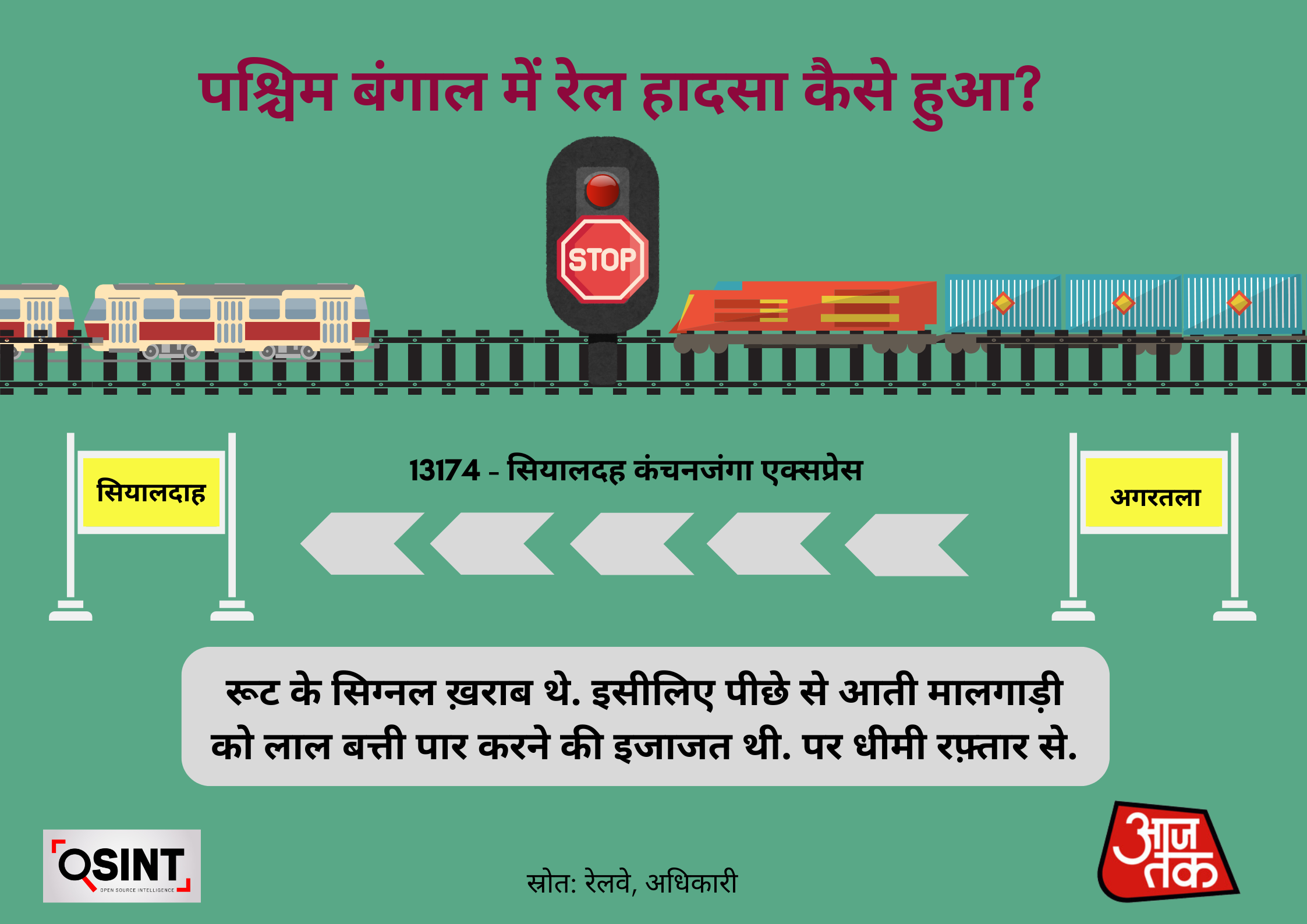
Source: aajtak
Due to the collision, a guard van and two parcel vans derailed. Data from the National Train Enquiry System indicates that the guard van was situated at the rear, followed by two luggage coaches and ahead of these, two coaches for unreserved passengers.

Source: aajtak
In the vicinity of the Aluabari Road Railway Station in Jalpaiguri district, freight train carriages were scattered across the tracks.
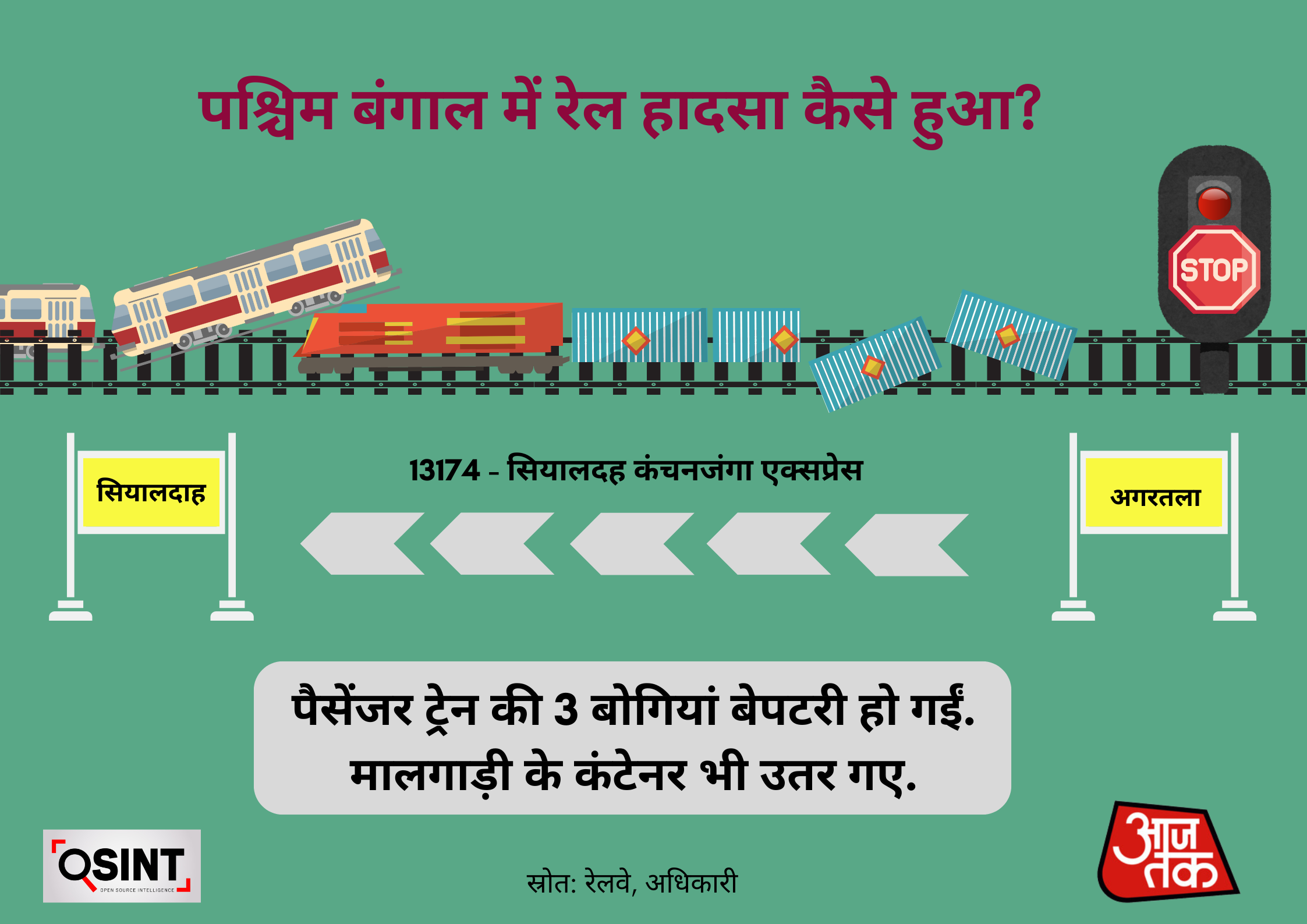
Source: aajtak
Railway Board Chairman Jaya Verma Sinha reported that the collision was caused when the freight train driver neglected a red signal. The signaling system had failed, and as a result, the stationmaster of Rangapani had issued a written memo, a TA-912, to the Kanchanjunga Express at 8:20 AM and to the freight train at 8:35 AM. Both trains were given the same note by the Rangapani stationmaster.
The note permits the loco pilot to cross all red signals if the signaling system is not functional. If the freight train had not been given 'TA 912', the driver was required to stop at every failed signal for a minute and proceed at 10 km/h. Additionally, the note instructed the loco pilot to watch for gates, allowing passage only when gates were closed. An open gate necessitated stopping the train beforehand.
Was the Freight Train Speeding?
Locals suggest that the freight train was traveling at a high velocity. One local revealed seeing the freight train approach rapidly and forcefully collide with the Kanchanjunga Express. Panic ensued among the bystanders. Another local described how in the aftermath, two carriages stood upright while a third overturned due to the excessive speed. The second train was moving at a slow pace at the time.
No 'Kavach' Safety System Installed
The Kanchanjunga Express, en route from Agartala in Tripura to Sealdah, was struck from behind by a freight train after crossing the Rangapani station at 8:55 AM.
Railway Board Chairman Jaya Verma informed that the 'Kavach' safety system, designed to prevent collisions between trains, had not been deployed on this route. Installment of the 'Kavach' system would have triggered automatic brakes to both trains, potentially avoiding the accident.
25 years ago, another terrible rail disaster occurred on this same route. The Awadh Assam Express bound for Guwahati collided with the Brahmputra Mail headed to Delhi, near the Gaisl Railway Station – 48 kilometers from the recent accident site. That collision in 1999 resulted in 287 fatalities.
